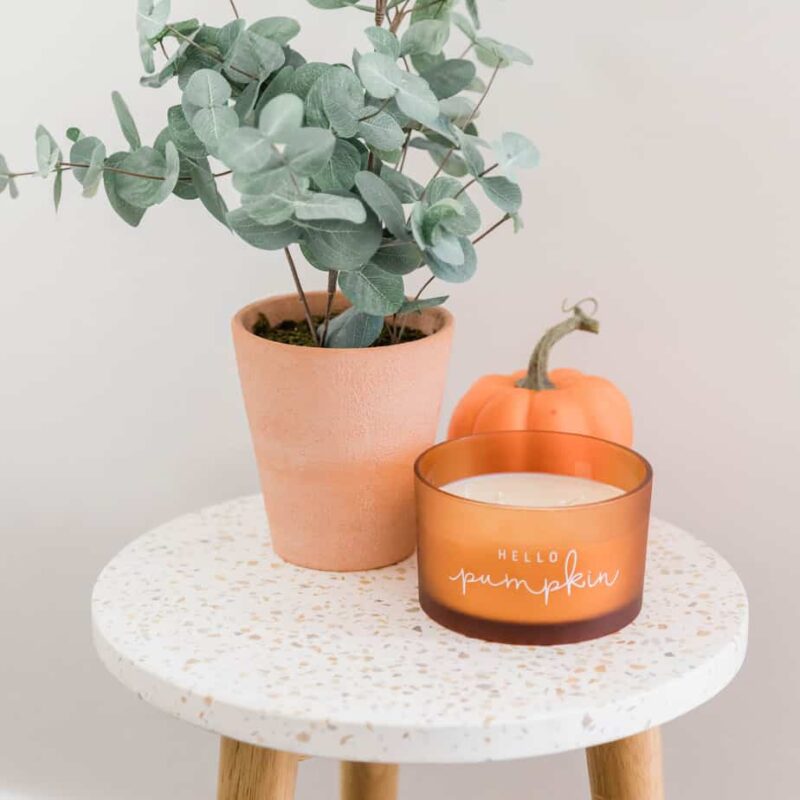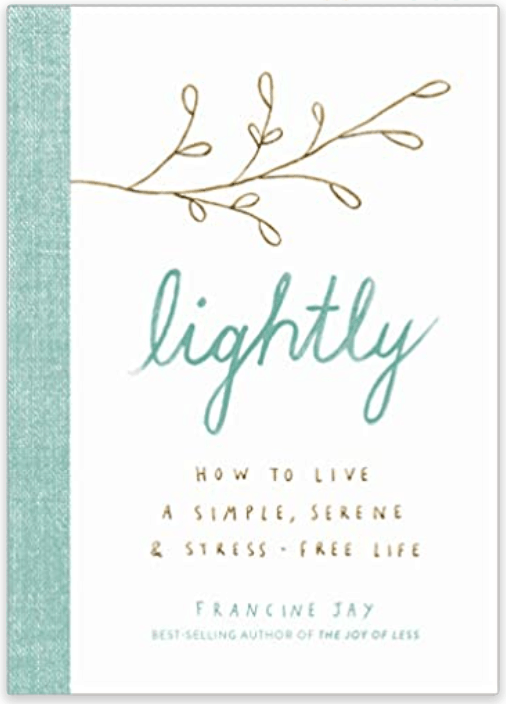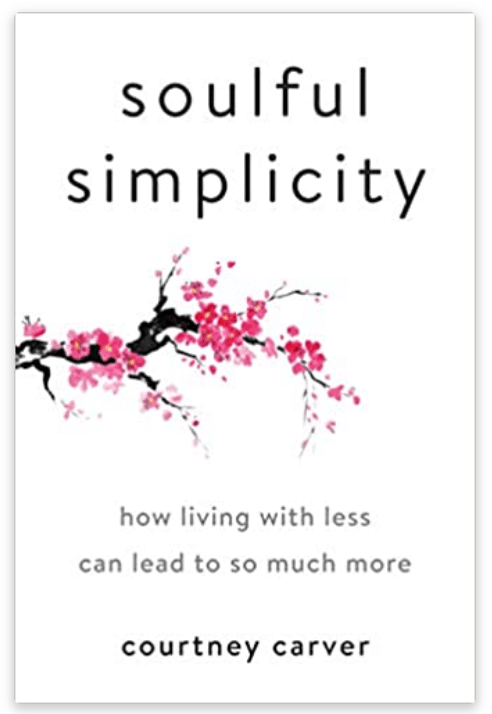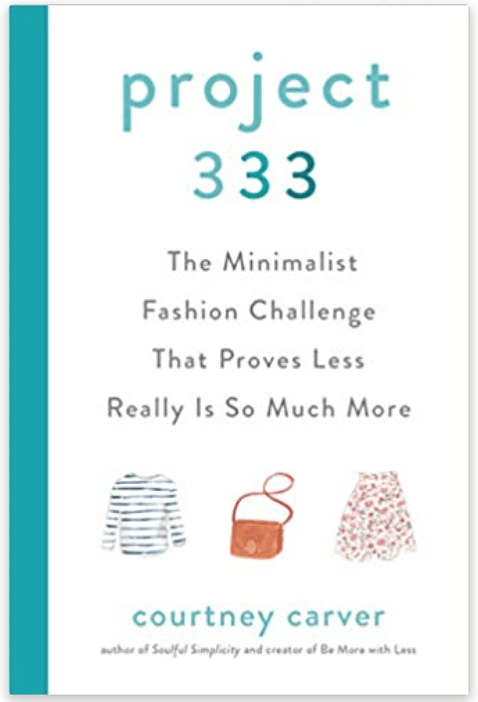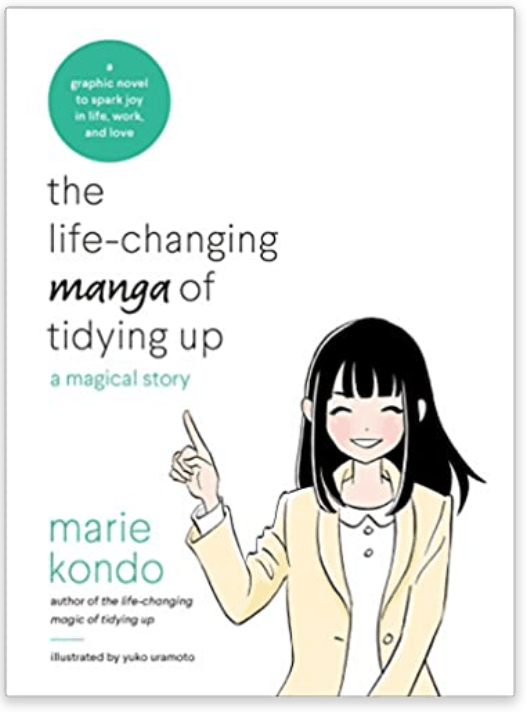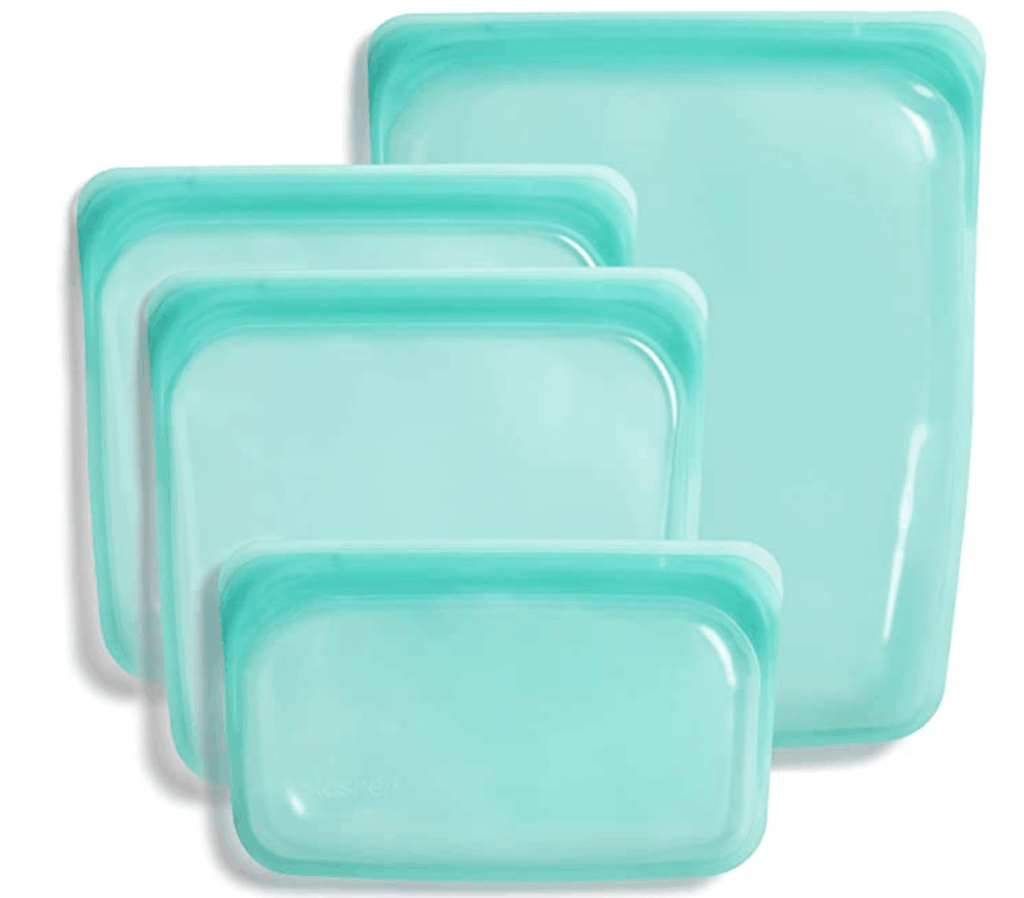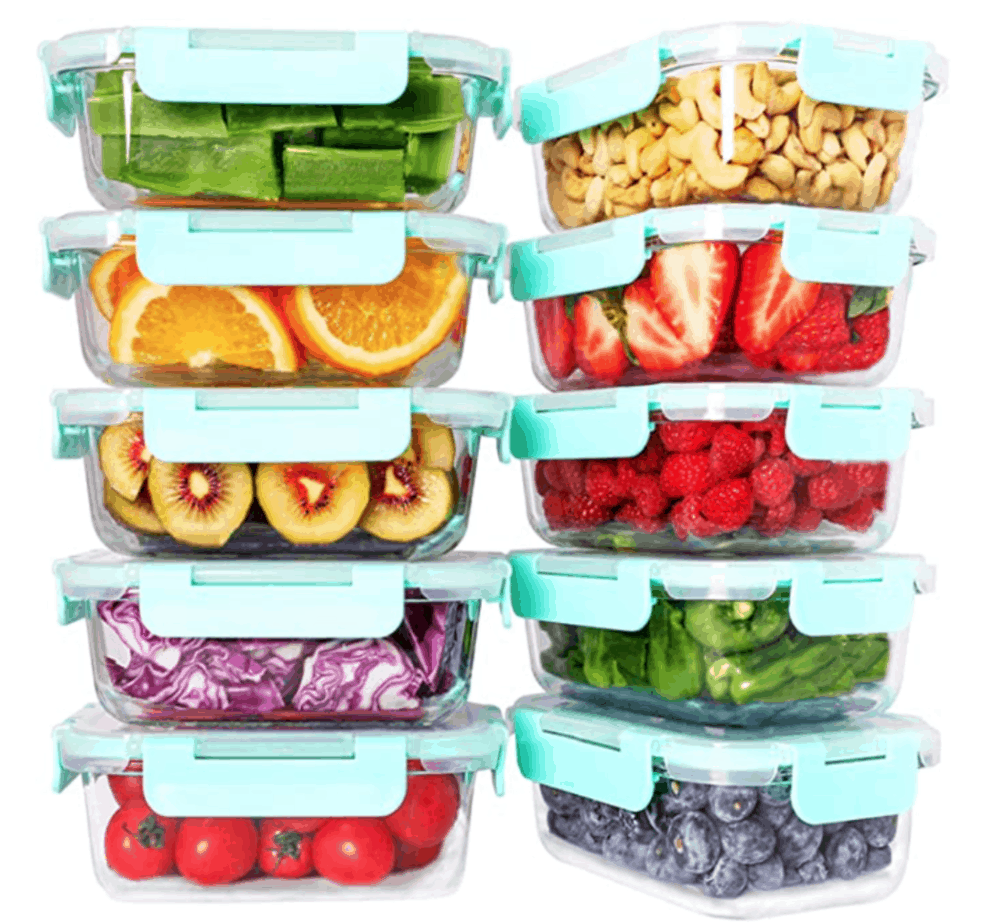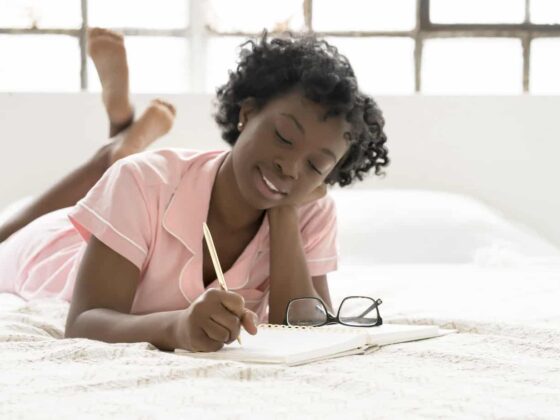Your home is a living space, not a storage space.
FRANCINE JAY
Are you constantly stressed and/or overwhelmed?
Does the thought of relaxing at home actually cause anxiety because you have so many things? Like knick-knacks and papers on all your counters and stuff peeking out from every nook and cranny?
Don’t worry, you’re not alone.
In early 2020, I decided to declutter my home and my life because I wanted to live a simple life. These 4 books have helped me fall in love with the concept of less and decluttering.
I was unable to focus, unable to prioritise and I felt like my possessions were owning me.
Although my stuff was pretty organized, I felt like I had a lot of stuff.
For a single woman living with 2 dogs, I needed a three-bedroom apartment and it was still not enough.
I realized it was time to declutter my home and let go.
Decluttering your home isn’t hard, provided you connect to the mission.
Usually, before I start any major or difficult activity, I always ask myself why.
The why is important, otherwise, you’ll lose focus and stop halfway or just not feel that it is important enough to finish.
So, before you start decluttering your home, understand why you’re doing it.
But before that really quick, get my free guide on how to really reset your life.
This post contains affiliate links, meaning I may make a commission at no extra cost to you if you decide to click on a link and purchase something. Click here to read the full disclaimer.
What are the benefits of decluttering your home?
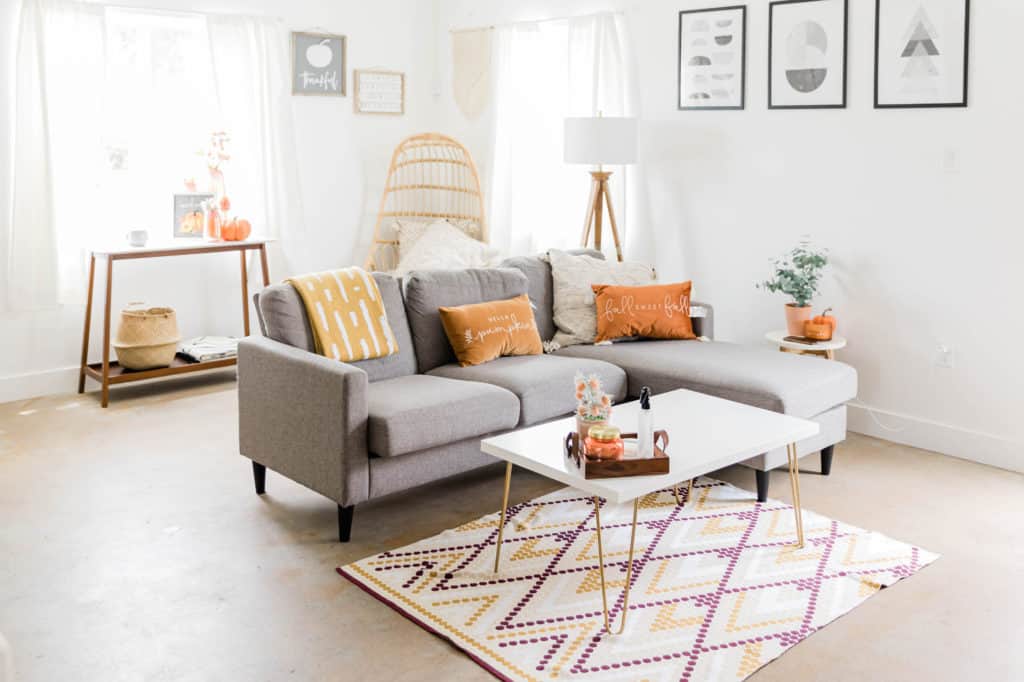
1. Less stress and anxiety
If you came home from a tiring day’s work to papers, spills and clutter everywhere, wouldn’t it irk you in some way?
Research shows that clutter overwhelms our stimuli with excessive stimuli which causes our senses to work overtime.
In short, clutter leads to stress and anxiety.
By eliminating clutter, you’re going to reduce your stress dramatically.
2. More empty space
I currently have 2 labradors and I live in a 1900 sq foot apartment. It’s lovely. They can run back and forth and they have so much place to move about.
If you have a family or pets, it’s so beneficial to declutter because they’ll have a larger living space.
3. Less to clean
This is by far the best benefit of decluttering. I hate cleaning. After Covid, I was forced to do all the cleaning myself. And it was a pain.
The lesser clutter you own, the easier it becomes to dust and clean.
4. You will be able to focus more on experiences rather than possessions
When I started moving toward minimalism, my entire life changed. Because I only started keeping what I needed, I was able to focus on what really mattered.
I spent more time outside and actually met more people. I became happier because my sole focus were on activities rather than things.
Minimalism doesn’t mean you need to get rid of everything. It’s about keeping what you need and focusing on experiences and people more. And this indirectly causes your happiness meter to go up.
5. Lesser allergens and illness
As a person with severe dust and pollen allergies, decluttering saved my life. When I had a lot of things, I’d wake up sneezing every day.
Now that I have fewer things and more empty space, my home is always clean and my allergies have reduced drastically.
I also use an air purifier. I highly recommend it if you have a dust allergy or you live with someone who does. It will improve the air quality in your home and you’ll actually notice the difference when it’s turned on for 10 minutes. I currently use this one.
Decluttering can be hard in the beginning, but if you start with the easy stuff, then you can slowly work your way up to the sentimental things you’ve never used or plan on using.
2 Types of decluttering strategies:
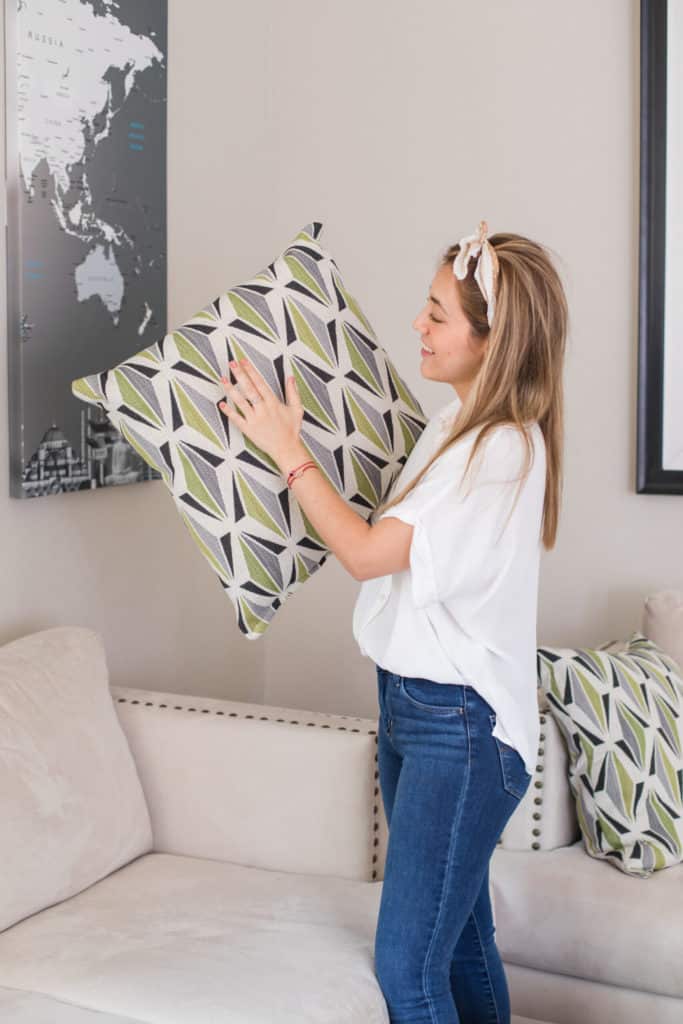
There are 2 methods that most people commonly use:
- Room by room: You pick a room that you want to start decluttering. Once you’ve finished the room, you move to another.
- By category: You start with 1 type of item like clothes or books. Once you’ve finished deciding what to keep and what to toss out or donate, you move on to the next category.
When I started decluttering, I used a combination of both.
I started with the living room, and once I was done with all categories, I moved on to the next room and so on.
I suggest making a detailed list of all the categories you want to declutter in each room. Once you’re done, cross it off.
It feels really, really good and gives you a huge feeling of accomplishment so you can move on to the next room.
How to declutter your house in one day
Before you start with a room, make 3 boxes. If you don’t have boxes, you can use 3 areas of your house. It’s basically going to be used to collect items.
- Recycle: These are items you do not need or want but can be recycled.
- Donate/Sell: These are items that someone else can benefit from like clothes, furniture, knick-knacks and so on.
- Throw away: These are things that you will never use and cannot be recycled or donated. It should go into the trash immediately.
I don’t have a Keep pile because the idea is to put an item away as soon as you touch it. Meaning, that if you find a coffee cup in your closet, you should return it to the kitchen with its family of cups immediately.
Forcing yourself to get up and return the item to its proper place will help you:
- Avoid getting leg cramps (from sitting too long and decluttering) and
- Keep you from misplacing items again.
Ready? Let’s begin decluttering!
1. Decluttering the living room
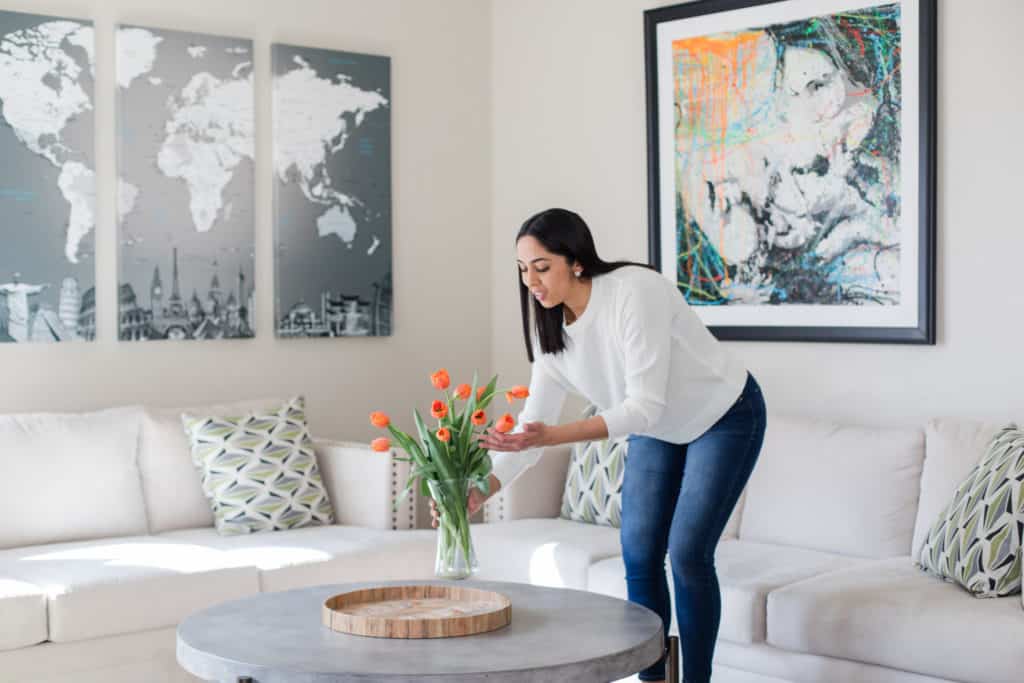
This room will take some time to declutter but it is also the most crucial to begin with since you will naturally spend more time here.
Step 1: Start with the furniture
See if you have any excess furniture that is taking up loads of space and not contributing to any use. I currently have only:
- 1 long bookcase for all my books and toys
- A small TV unit/entertainment center
- 1 small coffee table
- A large grey sofa and
- A dining table with 4 chairs
If you are considering buying furniture for your living room, make sure it has sufficient storage space so you can store your magazines, remotes, DVDs neatly.
If it’s covered, there is less to clean and dust.
Step 2: Empty each area completely
If you’re starting with the entertainment centre, empty it out. If you’re starting with the bookcase, clear it completely.
Once it’s clear, clean it, dust it and take a deep breath.
I found it really hard to discard my books because I have a lot of them and they mean a lot to me.
Instead of keeping them all back in, I started with the ones I loved best. I organized them by category. It follows the principle of choosing what to keep than what to toss.
I got this tip from two books:
I highly recommend reading both of these books if you want to fall in love with decluttering.
Whatever is left, I put into the donate and sell box. Do this for every piece of furniture in your living room.
Now you’ll only have what you require or love.
Step 3: Organize
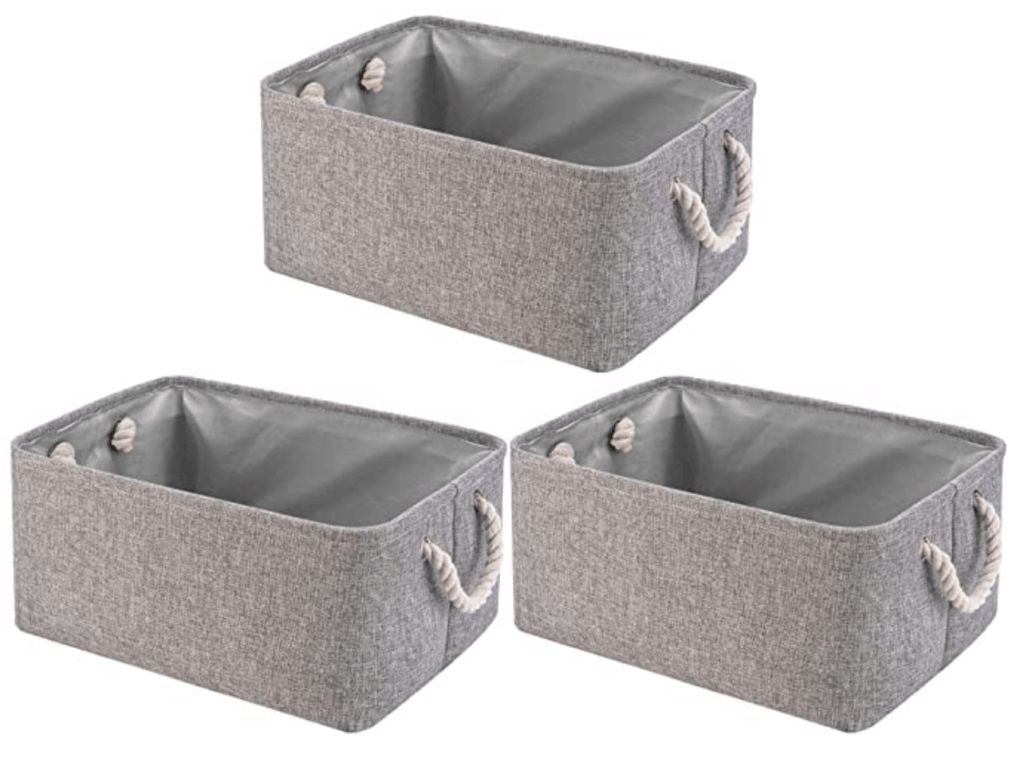
I purchased this beautiful set of 3 fabric storage bins. One for my remotes, the second for my water bottles and the third for my dog’s toys.
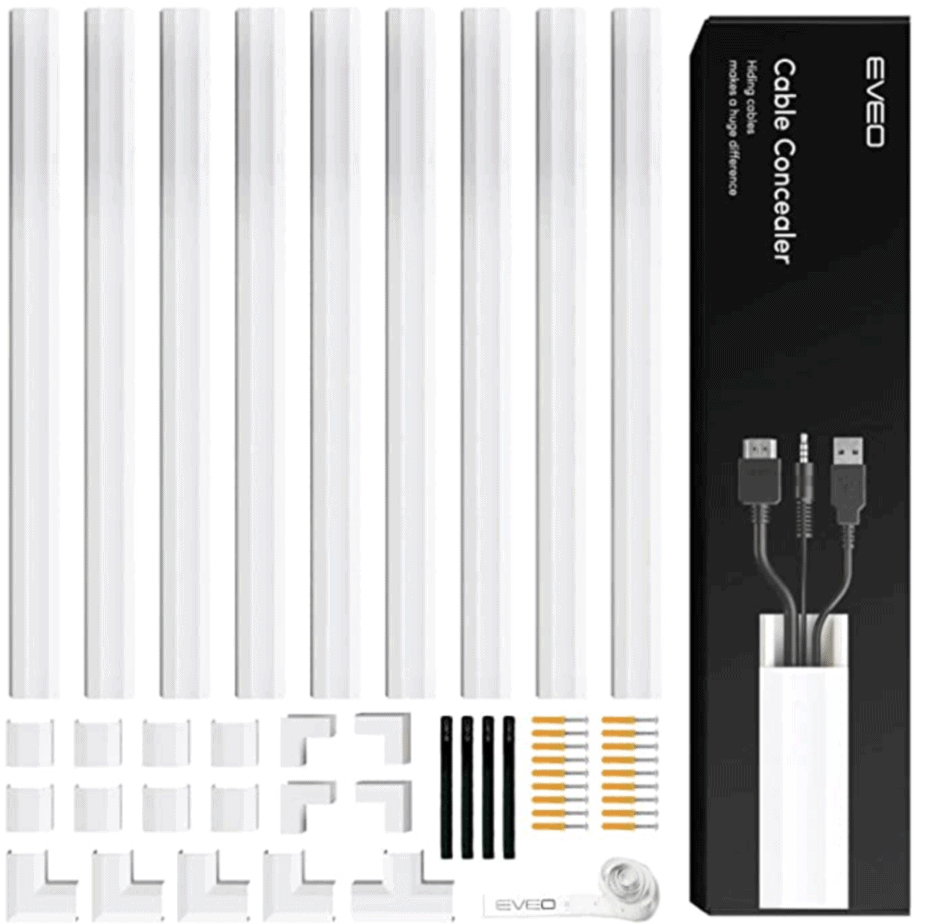
And, I also got this set of cable concealers to make my living room tidier because I didn’t like all the cables jutting out.
2. Decluttering the kitchen
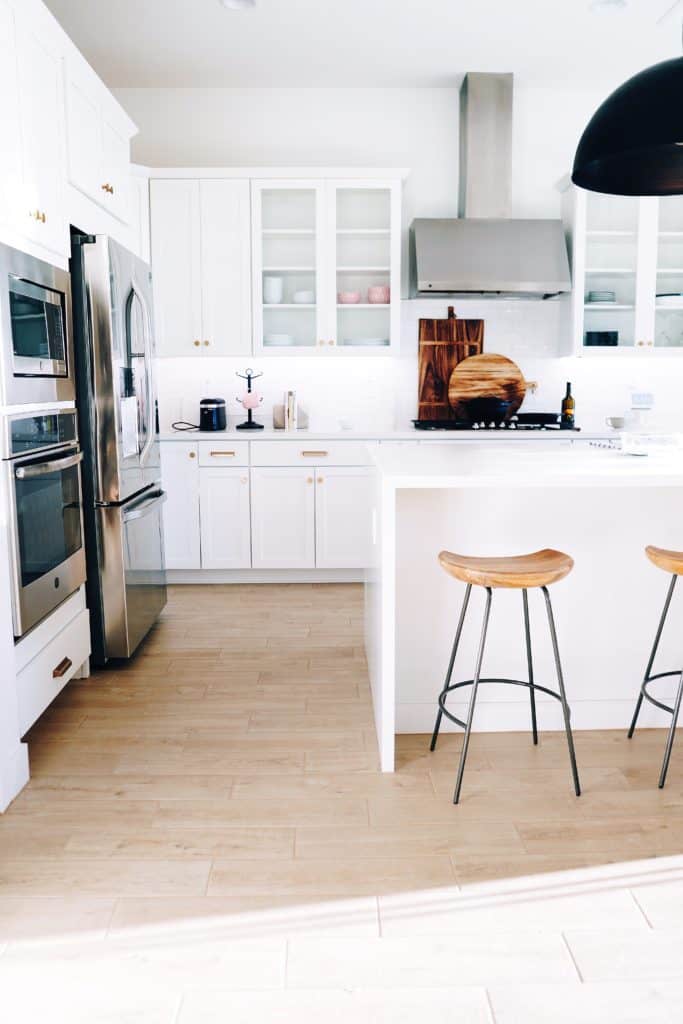
Your kitchen is a holy place because you create food and consume it there. It cannot be dirty.
It should be clean and functional.
Step 1: Start with your counters
You won’t feel like cooking or eating healthy if there is no space to work on.
Remove everything and keep only what is essential. I only have my coffee maker, a bottle of water on the counter. Everything else is stored away neatly.
Find a place for everything that you store away.
- Move all your main pots and pans into cabinets near the stove, since you’ll be using those a lot more frequently while cooking.
- Have a separate cabinet for clips, aluminum foil, meat storage bags, baking sheets and so on.
- Keep a separate cabinet for baking supplies. Keep your baking dishes closer to your oven.
- Items that are rarely used like a rice cooker, a sandwich maker or an ai fryer should go in the cabinets that are out of reach and/or further away from your main area of cooking.
Step 2: Discard duplicates
I used to collect cups. I love cups. I had quite a collection. Until I realized that I hardly ever used most of them.
It was difficult but I donated most of them and now all my cups fit in 1 drawer.
If you have a china set you’ve never used because you’re waiting for the current one to wear out, start using it now.
Life is short. Don’t keep duplicates for “just in case.” Just in case almost never happens.
Step 3: Work your way through the pantry
Discard any food item that has crossed its expiration date or will never be eaten. I’m looking at you, Jar of orange marmalade I bought when I was 23.
Store all food items in their respective categories.
If you’re storing food in plastic containers, consider upgrading to higher quality silicone storage bags or glass food containers.
These can store hot food and won’t release chemicals into your food. They are also leak-proof and will keep your food fresh for days.
3. Decluttering the bathroom
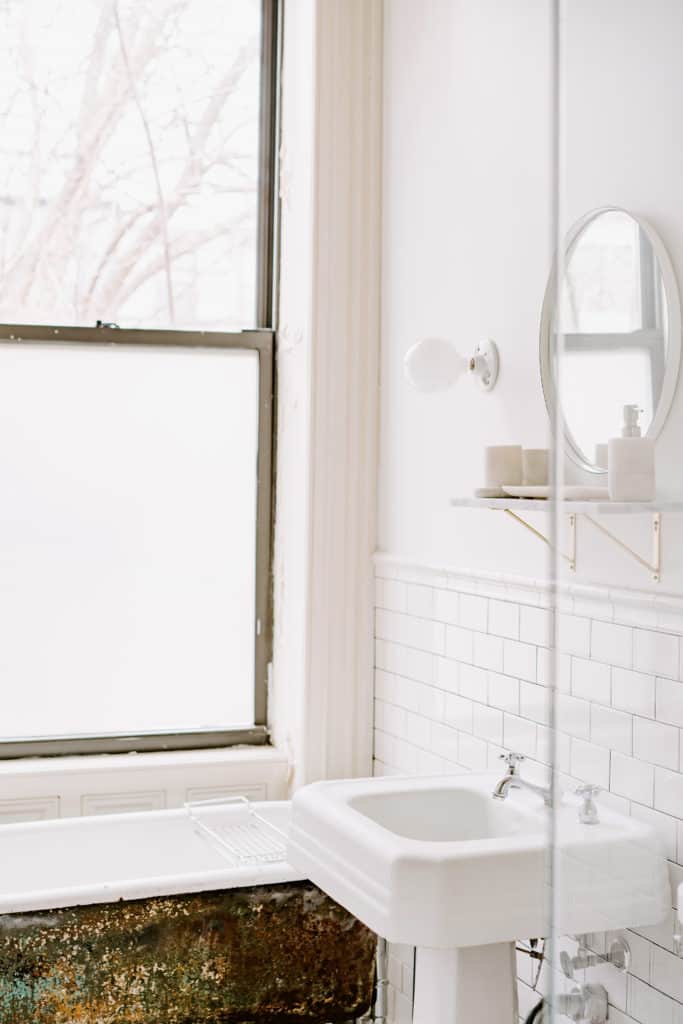
Step 1: Toss out old and expired products
Take out everything from every drawer and cabinet in your bathrooms. Toss out any medicine or skincare product that’s expired or you’re never going to use again.
It’s taking up precious space.
Step 2: Organize by category
Keep all of your cleaning supplies together. If you don’t have space in the bathroom, move it to your storage room with the detergent and other cleaning supplies.
Make sure it’s nowhere close to your skincare products, toiletries and towels.
Step 3: Organize
Neatly organize your toiletries by category and frequency of use. Keep only what you use daily on top of the sink. so it’s less cluttered.
If you’re only exfoliating your skin once a week, you can keep it in a drawer.
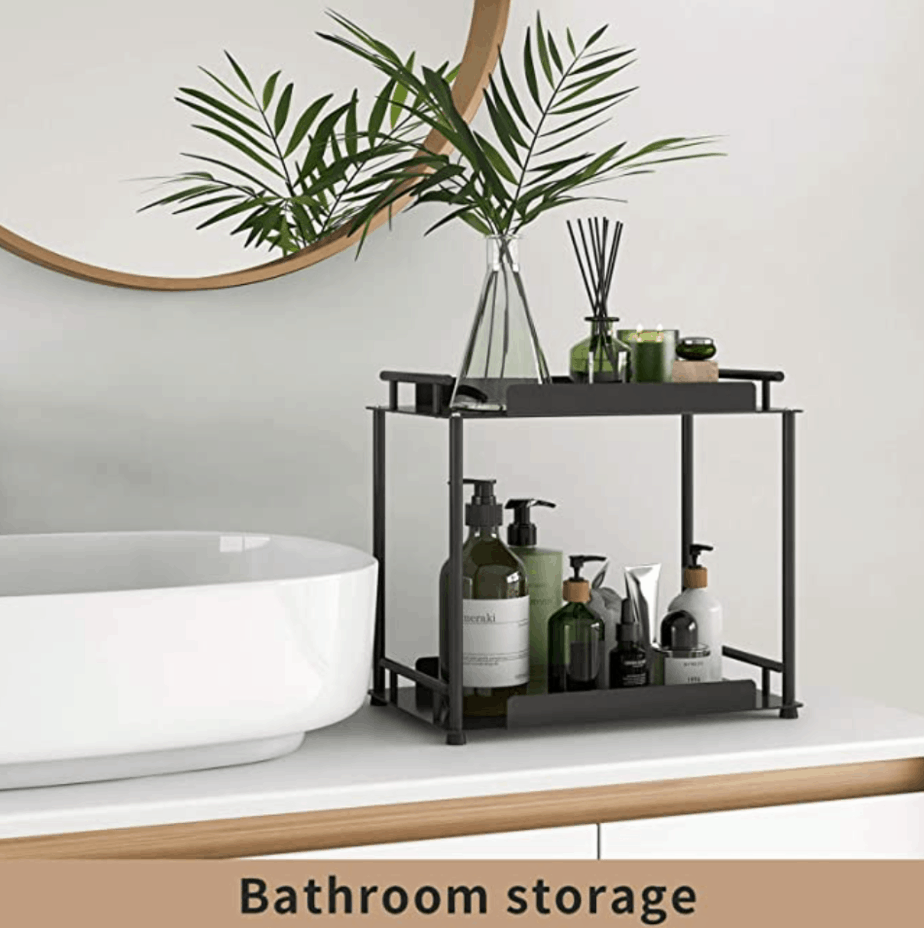
I purchased this beautiful 2-tier rack organizer to organize all my toiletries and it does a fabulous job. You can check it out here!
4. Decluttering the bedroom
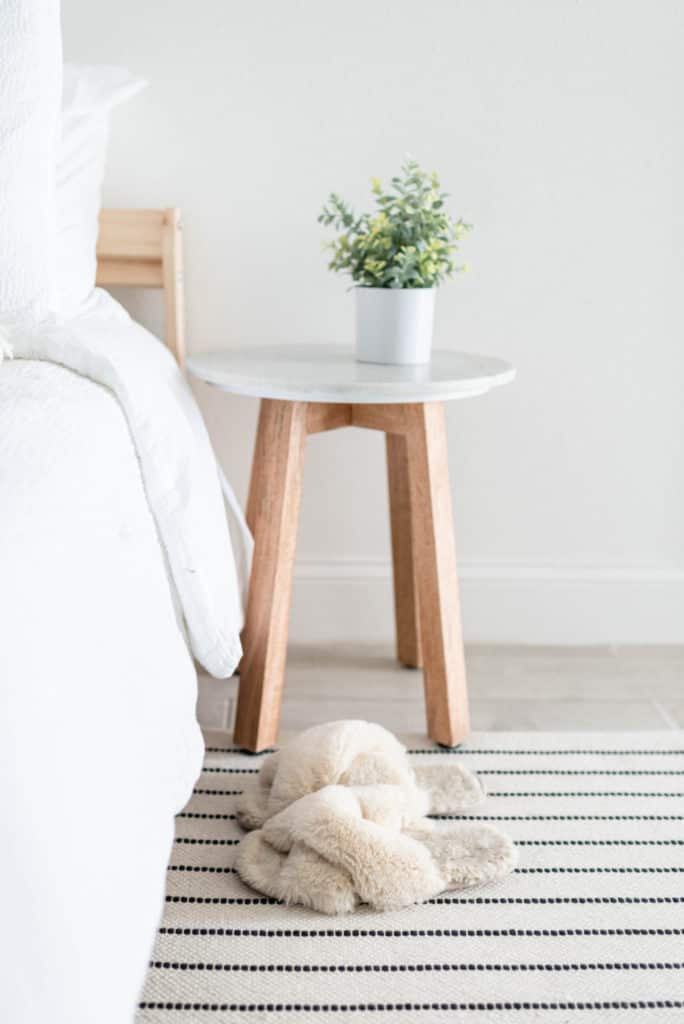
Step 1: Only keep what is necessary
Apart from your bed and your pets’ beds, 1 or 2 side tables and your cupboard and dresser, there is no need for anything else.
This is a place where you sleep and rest. It is crucial that there is a lot of empty space. It will help you relax and fall asleep quickly.
Step 2: Keep all surfaces clear
Your bedroom should provide zero distractions and should not gather dust. Cleaning your side tables and dressers become easy if you don’t have too much stuff on there.
Apart from your lamps and essentials, try to keep everything in the drawers.
Step 3: Return everything to its rightful place
Go through your nightstands and then your dressers. Empty everything. And then go through each item methodically. Return it to its original place in the house.
Throw out old and unused items like old cables, dried out pens, random filled notebooks and receipts.
5. Decluttering the Closet
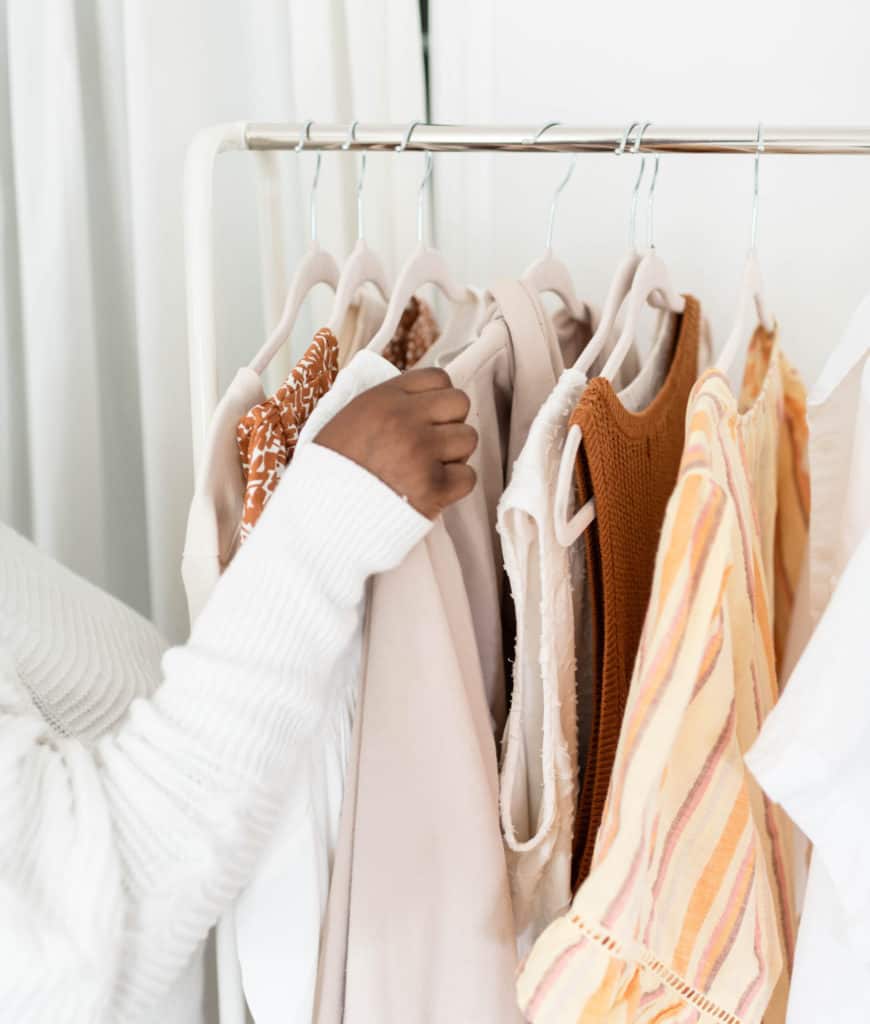
Step 1: Keep a “Maybe” box
Everything that you haven’t worn in over a year but still want to keep in case you decide otherwise goes in the “Maybe” box. I keep the Maybe box for another 6 months before all the items in it have to be donated or sold.
Step 2: Seasonal clothes should be kept out of reach
You don’t want to stuff your closet with clothes you only wear for 1 month a year. I only wear my sweaters and long pants during November and December because Bangalore becomes cold and chilly. So, for the rest of the year, I pack these up and keep them in the loft to avoid crowding my closet.
Step 3: Give your unused clothes a better home
I’m talking about that dress that’s 2 sizes smaller but is too pretty to throw away. Another person could make use of that dress that you’ve been holding onto for years just in case you lose that extra 12 pounds.
Give it away and comfort yourself that you’ve just made another person’s life a tad bit better!
Step 4: Organize your underwear and delicates with a drawer organizer
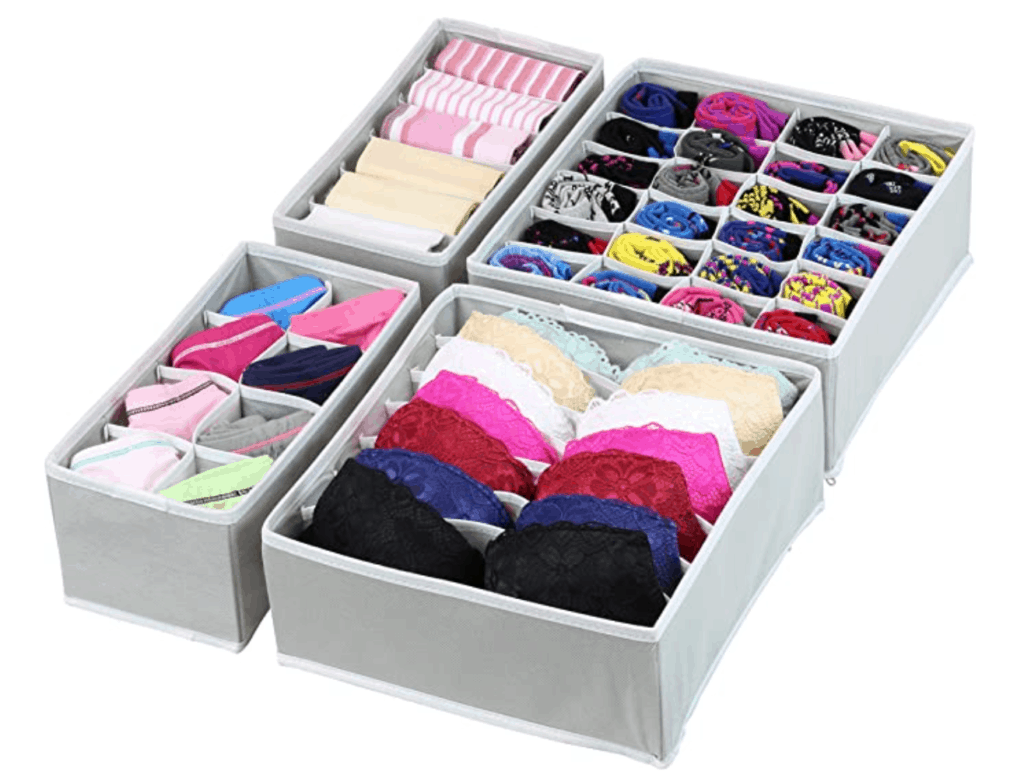
I’ve been using this drawer organizer for many years and it keeps all my delicates intact and in shape. No wrinkles and super easy to maintain.
6. Decluttering the home office
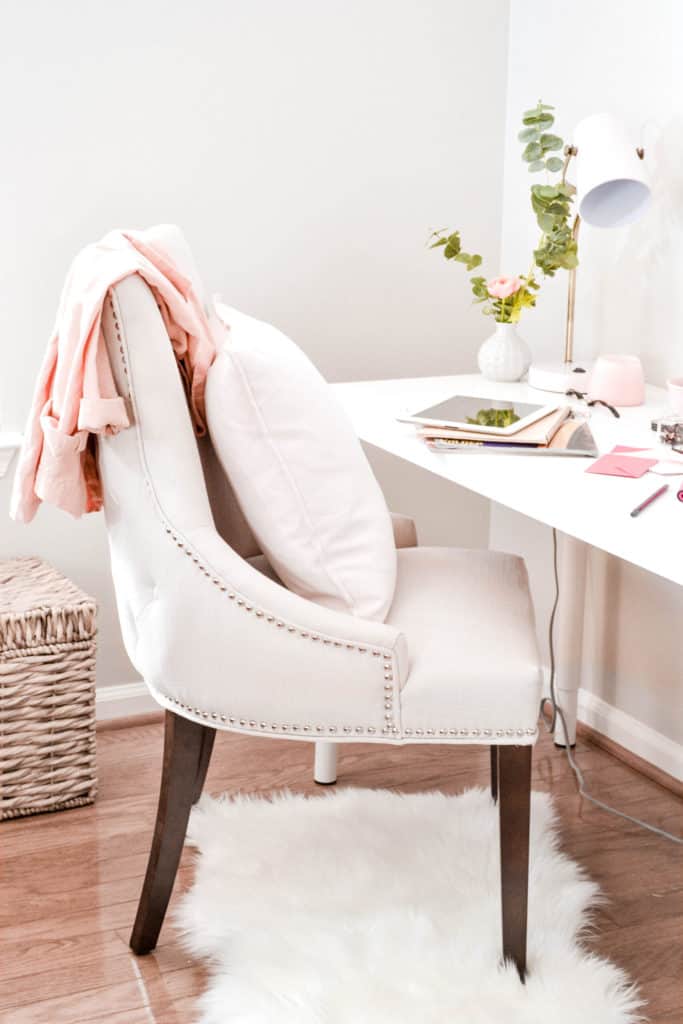
Step 1: Clear your desk completely and keep only what’s important
I got a smaller office desk. On top of the desk, I only keep:
- My laptop
- My planner and pen
- My chai cup
- A bottle of water
- A small rose gold pen holder containing 2 pencils and 2 pens
Keeping only what is important on your desk will eliminate distractions and help you focus on what’s important.
Step 2: Organize your office drawers
Empty your drawers completely and keep only what you need. Try to digitize everything.
I pay my rent and bills via an app and I save all the invoices in a neat folder in my laptop.
I consume mostly digital business books so all the information I need when referencing can be viewed with a few clicks.
I have printed only 2 workbooks which are in my drawer regarding titles which I use on a daily basis to work on some catching blog post titles.
Step 3: Tidy on a daily basis
If you work from home, make sure you dust your table every day and organize all your papers before you start work.
It’s the best way to start your day and you’ll be focussed and extremely clear on what you need to get done.
Bonus decluttering ideas:
No matter how much you declutter, you will find it getting messy and cluttered in time again. So, how do you avoid it?
1. Buy less
One of the best decluttering tips for hoarders (aka former me) is to stop the current flow of items into the house before beginning to declutter the house itself.
It’s perfectly alright to buy consumable items and hobby-related items (since you need to fulfil your life’s purpose). But whenever you’re buying anything else, ask yourself if you really need it and will really use it.
I follow the same minimalistic approach when buying gifts for someone.
A lot of us purchase items based on whim or how we’re feeling at the moment.
I usually put the item in question in my Amazon cart or wishlist for 30 days and if I still want it, only then do I actually buy it. Most of the time, it results in me not purchasing.
2. Become inspired
I buy a lot of books and if the book really serves me or I see myself reading them again, I don’t hesitate to make a purchase. I try to stick to digital copies if I know I’m going to read it only once.
But books that make me feel light or help me learn something really valuable – I purchase.
These are a few books I recommend reading if you’re just getting started with decluttering and becoming more mindful.
3. Declutter for 5 minutes every day
After you’re done decluttering your home, spend 5 minutes each day to declutter something in your home.
You can dedicate 1 day for each room. For instance, on Mondays, you will choose to get rid of or donate 1 item in your home office.
On Tuesdays, it can be the living room.
Either way, if you do this, at the end of the year, you will end up with 365 items lesser.
Remember to put your item in the “Maybe” box and tuck away the “Maybe” box somewhere you can’t see it like under the bed or at the back of the closet.
If you don’t use the item for the next 60 days, out it goes!
4. Keep things in their rightful place the minute you finish using it
When you get home, don’t throw your coat on a chair. Put it back in your closet.
Likewise, when you finish having breakfast, wash your plate and cup immediately. Letting it pile will make it harder to wash and take much more time to clean.
Doing this will help keep your home clean and tidy and you will always feel energized and focussed.
So tell me, are you inspired? What room are you going to start decluttering today?
